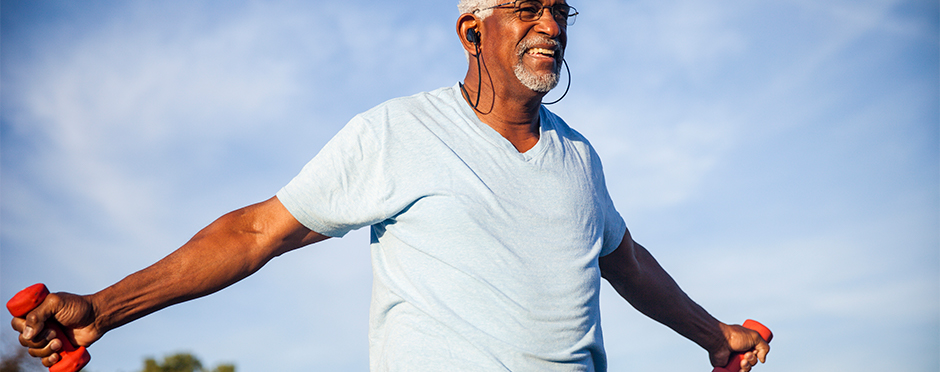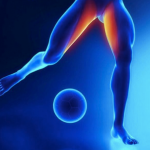

Research shows that as much as 50 percent of the declines in health due to aging are related to inactivity.5 Successful aging has been linked to genetics and a healthy lifestyle that consists of proper nutrition and exercise, but what about the aging athlete who isn’t a stranger to activity? What are some key considerations for seniors as their activity levels remain high, but their body’s physiologic response changes with age?
As baby boomers become more active and healthy living becomes a bit trendier, I’ve been receiving a lot of these questions from patients who endeavor to stay active as they refuse to let their age slow them down. Thus, I’ve put together some tips to help us, aging athletes, age successfully!
1. Accept it.
Whether athletic or not, the processes of aging are the same in all of us. Even with the healthiest lifestyle, we all undergo predictable changes in our body systems that include disease states and compromises in our performance. Our bodies are sure to change; accepting this inevitability will only help us adapt and adjust to these changes, while decreasing the likelihood for injury and/or impairment.
2. Turn it up.
Any given sport or workout has three elements that can be manipulated in one’s fitness regimen to obtain the desired results: frequency, duration and intensity.1 Intensity is the operative word here – as we get older, the tendency is to trade in intensity for duration. However, as athletes, we need to do the very opposite in order to perform at a high level.1 Avoid the long, slow distances and incorporate exercises with an emphasis on muscular endurance, anaerobic endurance and power.1 Higher intensities over a shorter duration, 2-3 times a week will help to stimulate testosterone release, which helps maintain muscle mass.
3. Lift it up.
Putting the muscles and bones under stress through lifting weights and even performing body-weight resisted exercises (such as push-ups, squats and lunges) help to promote bone and muscle health. This is essential in an effort to negate the decrease in bone density that comes with aging.1,3 Rebuilding bone and gaining muscle is still a possibility no matter what age we are!
4. Recover.
Sleep and nutrition are directly linked to an athlete’s ability to recover from strenuous activity. The days of being able to perform at a high level on little sleep and/or a bad diet become fewer and fewer as we get older.
Sleep is essential because it is our body’s way of regenerating from the breakdown caused by the increased intensity of our exercise regimens (see above). Adequate sleep is also linked to increased testosterone levels, which increases muscle and bone mass in men and women.
Nutrition is also integral in an aging athlete’s recovery and performance; food is fuel. Macronutrients and micronutrients are twin concerns as they relate to an athlete’s nutrition. It is crucial that macronutrients, such as carbohydrates and proteins, are replenished after competition or exercise.2 Carbohydrates are considered to be the athlete’s “Master Fuel” as they provide energy to 50 percent of any moderate to rigorous endurance workout.2 Proteins are essential as they are the building blocks of muscle and bone, as well as aide in the build and repair of tissues after breakdown. Micronutrients, in vitamins and minerals, are essential as they facilitate energy production and utilization from carbohydrate, fat and protein; transport oxygen and carbon dioxide; and regulate fluid balance.2
5. Hydrate.
Water is arguably the most essential nutrient in the human diet. H2O regulates our temperature and maintains several bodily functions such as food digestion, absorption of its nutrients and excretion of waste.2 Athletes of all ages need to be sure to hydrate before, during and after moderate to rigorous activity. Exercise, sports and environmental conditions can all impact fluid loss, which refers to expending more fluids than we take in. Research shows that one percent of fluid loss makes the heart beat 3-5 times greater per minute, which is especially significant in the aging population that will naturally have certain cardiac considerations.2 It is not uncommon to lose a sense of thirst as we get older and certain medications may make it even more important to drink water. Thus hydration must be a concentrated effort.
Get in the Game
All in all, it is an unavoidable fact that the aging process causes a gradual decline in a person’s ability to adapt and adjust to their environment. While exercise and athletic activity certainly slows down this decline, it is imperative that aging athletes understand that they are not exempt to these bodily changes simply because they are active. Accepting this fact of life is not conceding defeat by any means, but it assists in developing and executing the game plan to aging successfully! Get in the game!


